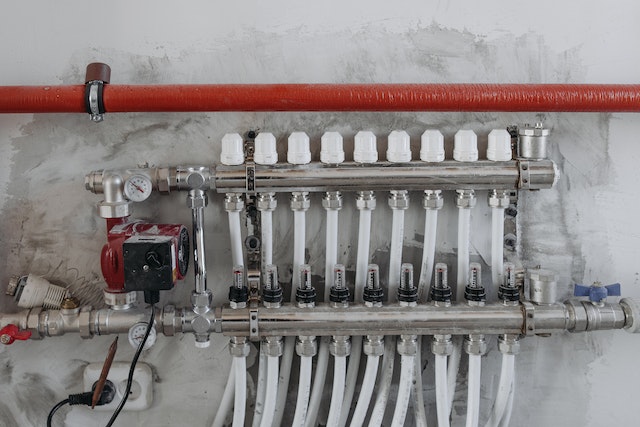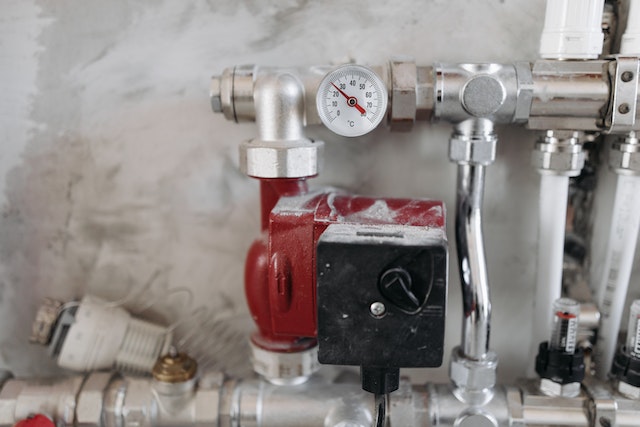Plumbing supply refers to the various materials, tools, and equipment used in plumbing systems, such as pipes, fittings, valves, appliances, and fixtures. These supplies are used in the installation, repair, and maintenance of plumbing systems in homes, buildings, and other structures.
Essential Home Plumbing Supplies
Here are some essential home plumbing supplies that every homeowner should have on hand:
- Teflon tape: Used to seal pipe threads and prevent leaks.
- Pipe cutter or saw: Used to cut pipes to the appropriate size.
- Adjustable wrench or pipe wrench: Used to properly tighten fittings and prevent leaks.
- PVC pipe and fittings: Used for drain, waste, and vent lines.
- Copper pipes and fittings: Used for water supply lines.
- Plunger: Used to clear blockages in drains.
- Pipe-bending spring: Used to create smooth, consistent bends in copper pipes.
- Pipe-freezing kit: Used to freeze pipes instead of cutting them when making repairs.
- Pipe-locating device: Used to easily find pipes in walls or underground.
- Pipe-sizing chart: Used to determine the correct size pipe for a project.
- Leak detection spray, UV flashlight: Used to detect leaks in pipes and joints.
- Bucket, rags, and towels: Used to clean up any water or spills.
- Drain snake or auger: Used to remove blockages in pipes.
- Showerhead, faucet aerator, flow restrictor: Used to control water flow and pressure.
- PEX or Flexible hose: Used to connect the water supply to appliances and fixtures.
These are the basic supplies that can be used for most home plumbing needs, but it’s always best to consult a professional plumber if you are unsure about what to use or how to use it.

10 Plumbing Supply Tricks All Experts Recommend
- Always use Teflon tape on pipe threads to ensure a watertight seal.
- Use pipe dope in addition to Teflon tape on pipe threads for extra security and to prevent leaks.
- Use PVC pipe and fittings for drain, waste, and vent lines to avoid corrosion.
- Use a pipe cutter or saw to ensure a clean, straight cut on pipes.
- Use a pipe wrench or adjustable wrench to properly tighten fittings and avoid leaks.
- Use a pipe-bending spring to create smooth, consistent bends in copper pipes.
- Use a pipe-freezing kit to freeze pipes instead of cutting them when making repairs.
- Use a pipe-locating device to easily find pipes in walls or underground.
- Use a pipe cutter or saw to remove old pipes before installing new ones.
- Use a pipe-sizing chart to determine the correct size pipe for your project.
It is important to note that while these tricks are recommended by experts, it’s always best to consult a professional plumber if you are not sure about what you are doing to avoid any potential damage or hazard.
How to Recognize the Plumbing Supply That’s Right for You
When looking for plumbing supplies, there are several factors to consider to ensure that you get the right products for your needs:
Type of project:
Consider the type of project you are working on. Different projects may require different types of supplies. For example, a kitchen remodel will require different supplies than a bathroom remodel.
Quality:
Look for products that are made with high-quality materials to ensure that they will last a long time and perform well.
Brand:
Choose well-known and reputable brands to ensure that you are getting a quality product.
Compatibility:
Make sure that the plumbing supplies you choose are compatible with your existing plumbing system.
Certifications:
Look for products that have been certified by relevant organizations, such as UPC, IAPMO, etc. to ensure that they meet industry standards.
Price:
Compare prices from different suppliers to ensure that you are getting the best deal.
Warranty:
Look for products that come with a warranty to ensure that you are protected in case of any defects or issues.
Customer service:
Choose a supplier with good customer service, as this will make it easier to get any questions or concerns addressed.
Availability:
Make sure that the supplier you choose has the products you need in stock and can deliver them in a timely manner.
Technical assistance:
Look for a supplier that can provide technical assistance and guidance on how to properly install and use the products.
